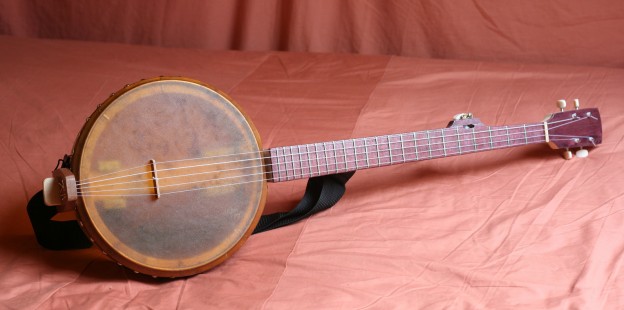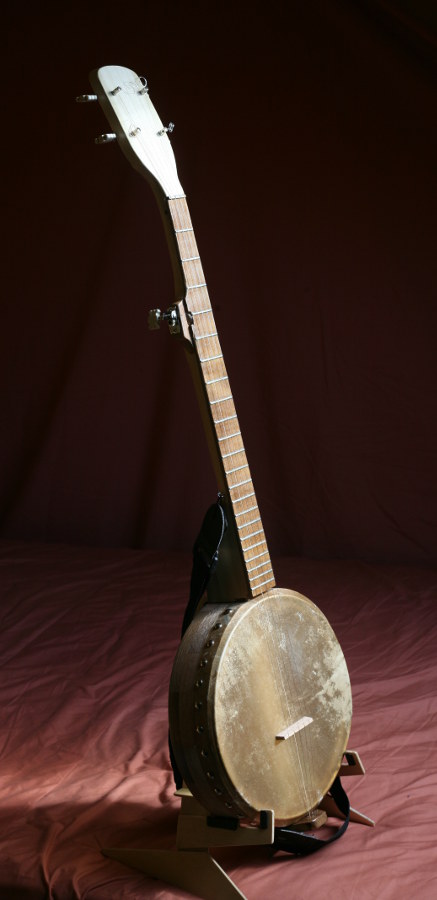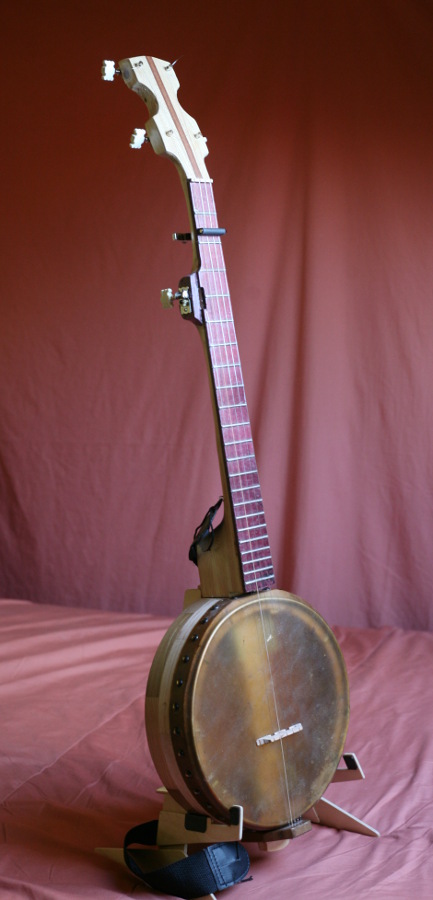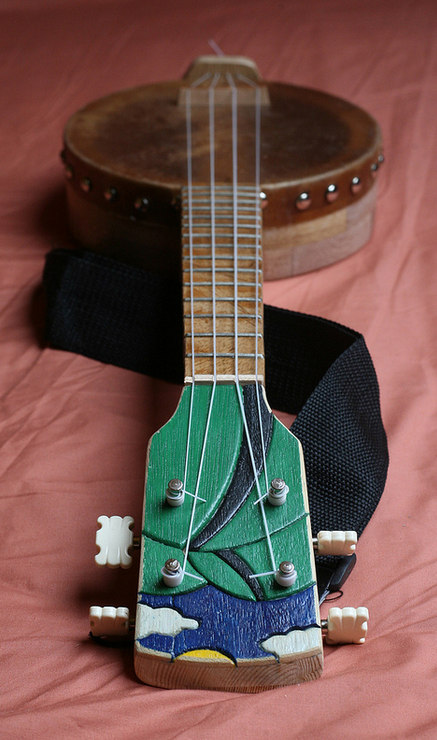Kenny was one of my pupils at Royal High. He built this banjo as the final project for the Standard Grade Craft & Design course, working on it from September 2012 until March 2013. I marked out and cut the neck at the band saw, but Kenny did almost all the rest. It was one of the best banjos built in the department.
The rim (pot) was turned on the wood lathe from twenty-four hardwood segments. The neck was laminated pine with a purple heart hardwood finger board and peg head veneer. Calf skin was stretched over a brass tone ring (rolled and soldered in-house) and fixed to the rim with furniture tacks. Guitar fret wire has been used instead of banjo wire, as it’s easier to press in place. The neck was fixed to the rim using cast aluminium brackets (cast in-house) and hardwood wedges. Nylgut (nylon) strings were fitted.
High resolution photos of the banjo are available at Royal High CDT’s Flickr account. Each photo is captioned with construction information.
Work in progress photos of a similar banjo being built are available here:
https://www.flickr.com/photos/cdtlog/sets/72157628065703373/
.



